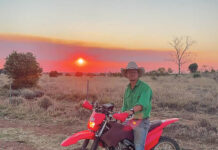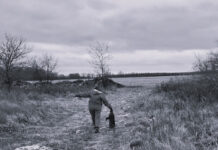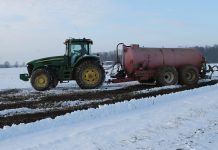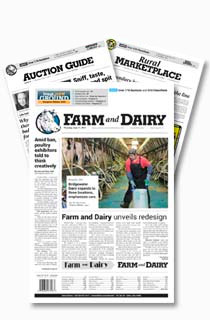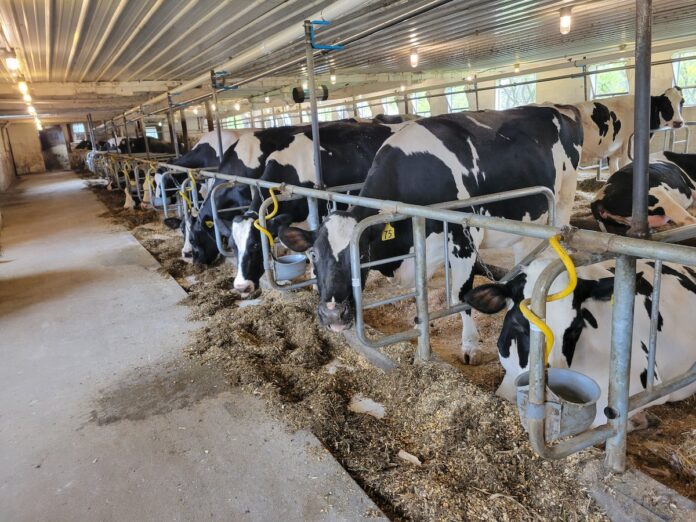
As the summer approaches, dairy producers across the U.S. are once again reminded of the importance of taking proactive steps to keep their herds cool. Effective heat stress management is essential for maintaining good animal welfare and productivity. In fact, research shows that the effects of heat stress can extend across generations — calves born to overheated cows often have shorter lifespans and reduced milk yields as adults.
Cows naturally produce a lot of body heat from digesting feed, moving around and making milk. While they also lose heat to their surroundings, they can gain heat from it too. To stay cool, cows adjust their behavior and body functions. But when heat builds up faster than they can get rid of it, they become uncomfortable. This leads to higher, fever-like body temperatures, poor fertility and lower milk production.
While it’s easy to spot cows in visible distress, subtle signs of heat stress are often missed. Research shows cows begin seeking shade at just 61 F and start using sprinklers (soakers) around 72 F— well before most of us would consider it hot. Spotting these early cues is key. Ideally, cows should breathe fewer than 60 times per minute and lie down for 9 to 12 hours per day.
Cooling strategy
The most effective and efficient cooling strategies combine shade (outdoors), fans and soakers. But simply having these tools isn’t enough — how they are managed makes all the difference. Proper placement, timing and maintenance are critical to maximizing cooling while conserving water and energy. Many U.S. dairies already use fans and soakers, yet heat-related milk losses are still common — often due to inconsistent or suboptimal use. Research shows that, in the Midwest, a well-managed cooling system typically pays for itself in under three years. Calves, heifers and dry cows also show better performance and welfare when kept cool. Prioritizing animal comfort is vital to meeting growing consumer expectations for ethical and sustainable dairy practices.
Fans and soakers should ideally be installed together over the feed bunk, where cows spend much of their standing time. Cows cool most effectively when their bodies are soaked first and then dried by moving air — this combination promotes efficient heat loss. It takes about 30 seconds of soaking at a flow rate of 0.9 to 1.4 gallons per minute to thoroughly wet a cow’s coat. Nozzles can be arranged to cover three cows at a time, with overlapping spray zones for full coverage.
While using more water may improve cooling, it often leads to inefficiency. Using a short soaking cycle of 30 seconds, followed by 4 to 5 minutes of fan-only time accomplishes effective cooling. Airflow should reach 8 to 10 feet per second across the cow’s body. Panel or basket fans should be spaced at 10 times their diameter, aimed in the direction of prevailing winds and tilted downward to blow just below the next fan. If you have extra fans, place them in resting zones to increase airflow and encourage lying time.
Cooling in holding areas is especially important. We’ve observed spikes in body temperature when fans and soakers are turned off during afternoon milking. For pasture-based dairies, consider using holding pens as designated cooling areas.
Don’t wait until cows are hot — start cooling early. It’s much easier to prevent rising body temperatures than to cool cows down afterward. Use automated temperature controllers placed in locations that reflect what the animals are actually experiencing.
Clean, fresh drinking water is equally important to all the strategies discussed above. Water intake increases during warm weather, so ensure access is easy and plentiful. Keep troughs clean, shaded when possible and place them near resting, feeding and exit areas to minimize walking distance.
Taking a few extra steps now can make a big difference all summer long. By fine-tuning your cooling strategies, you can improve animal welfare, boost productivity and conserve water and energy.
Free assessment
As part of our research, we’re offering a free, on-farm heat stress assessment to help you evaluate how your current cooling practices are performing. If you’re interested in participating, visit https://go.osu.edu/awer_dairy, call 614-292-5248 or email us to learn more.
(Israel Obadare is a master student in animal sciences. Grazyne Tresoldi is an assistant professor of animal welfare at OSU’s Department of Animal Sciences and can be reached at Tresoldi.3@osu.edu.)



